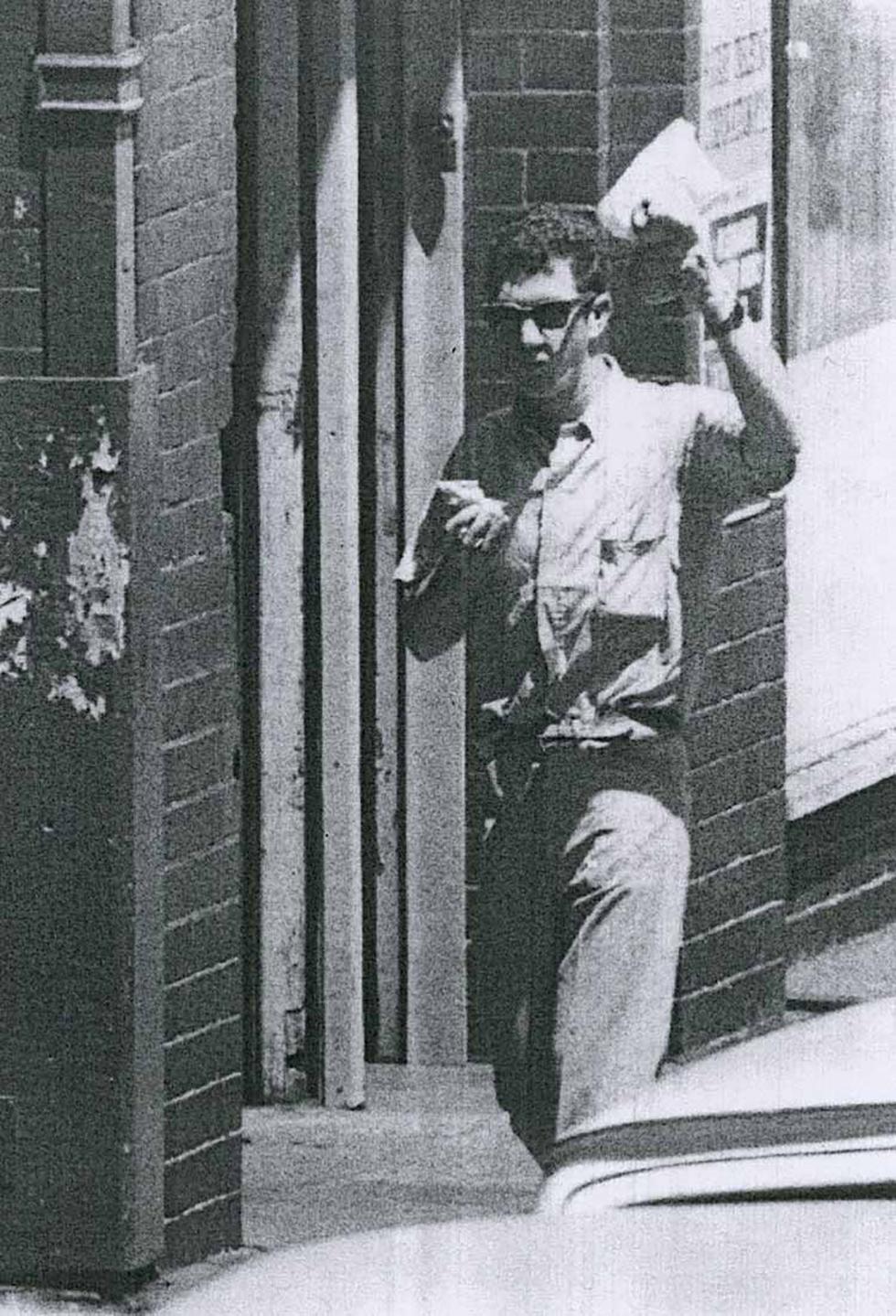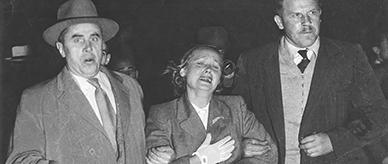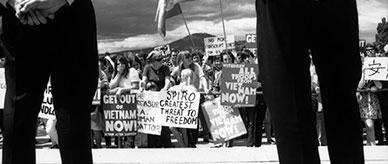


About this record
This is a black-and-white surveillance photograph of Brian Aarons, a member of the Communist Party of Australia, taken by Australian Security Intelligence Organisation (ASIO) officers as he leaves the Communist Party headquarters on 23 November 1966. Brian Aarons holds some food in his right hand as he walks along, and with his left hand waves a food bag at an unseen person. He is casually dressed and wears sunglasses. The security operation was known as Operation Shiver.
Educational value
- This photograph is evidence of the Australian Government's mistrust and surveillance of the Communist Party during the Cold War period of the 1960s. ASIO was established on 16 March 1949 after a United States and British code-breaking operation revealed that sensitive government information was being passed to the Soviet Union from a source in Australia. For decades Soviet espionage remained ASIO's main focus.
- The image shows a member of the Communist Party in the 1960s. Founded in Sydney in 1920, the Communist Party reached a peak membership of about 20,000 in the 1940s, and had significant roles in various industrial conflicts and protest movements before it was officially wound up in 1991. The Socialist Party of Australia, formed in 1971 by breakaway members of the 'old CPA', changed its name to the Communist Party of Australia in 1996.
- Brian Aarons (1945–) has a history of activism on a range of social issues and movements including campaigning against the Vietnam War, supporting the environment and advocating for Indigenous rights and reconciliation. In 1965 he was involved in the Freedom Ride for Aboriginal Rights. When conscripted to fight in the Vietnam War, he became a draft resister. At the time of the photograph, he was aged 22 and a student, and he later became an academic with the University of New South Wales.
- The photograph is an example of the surveillance techniques being used by ASIO at the time of Operation Shiver (1966–67). Common methods included phone taps, spy microphones and photographic surveillance. ASIO surveillance of Communist Party members was so prevalent that many came to expect it. It is possible that Aarons is actually waving to the ASIO photographer, as he knew he was being watched by ASIO.
- The Aarons family were prominent figures in the communist movement in Australia. They included Brian Aarons's father, Laurence (Laurie) (1917–2005), his mother Carole Arkistall and brothers Mark and John. The Aarons’s faction of the Communist Party criticised the 1968 Soviet invasion of Czechoslovakia as well as other policies of the Soviet Union under the leadership of Leonid Brezhnev. This led to a split in the Communist Party of Australia and the withdrawal by the party of its support for the Soviet Union.
- The photograph is an example of ASIO photographs released under the Archives Act 1983. This legislation gave the public access for the first time to ASIO records. When this photograph was made available, the Archives Act provided for the public release of government records after 30 years where eligible. The Act was amended in 2010 so that eligible government records can be released after 20 years. This change will be phased in over 10 years. Some material on ASIO and other records, such as the names of ASIO officers, information about operational procedures and information-sharing relationships, are withheld from public access in accordance with the Archives Act. After retiring, Laurie Aarons used the Archives Act to view almost 1000 files on himself and the Communist Party of Australia.
Acknowledgments
Learning resource text © Education Services Australia Limited and the National Archives of Australia 2010.
Related themes
Need help with your research?
Learn how to interpret primary sources, use our collection and more.


